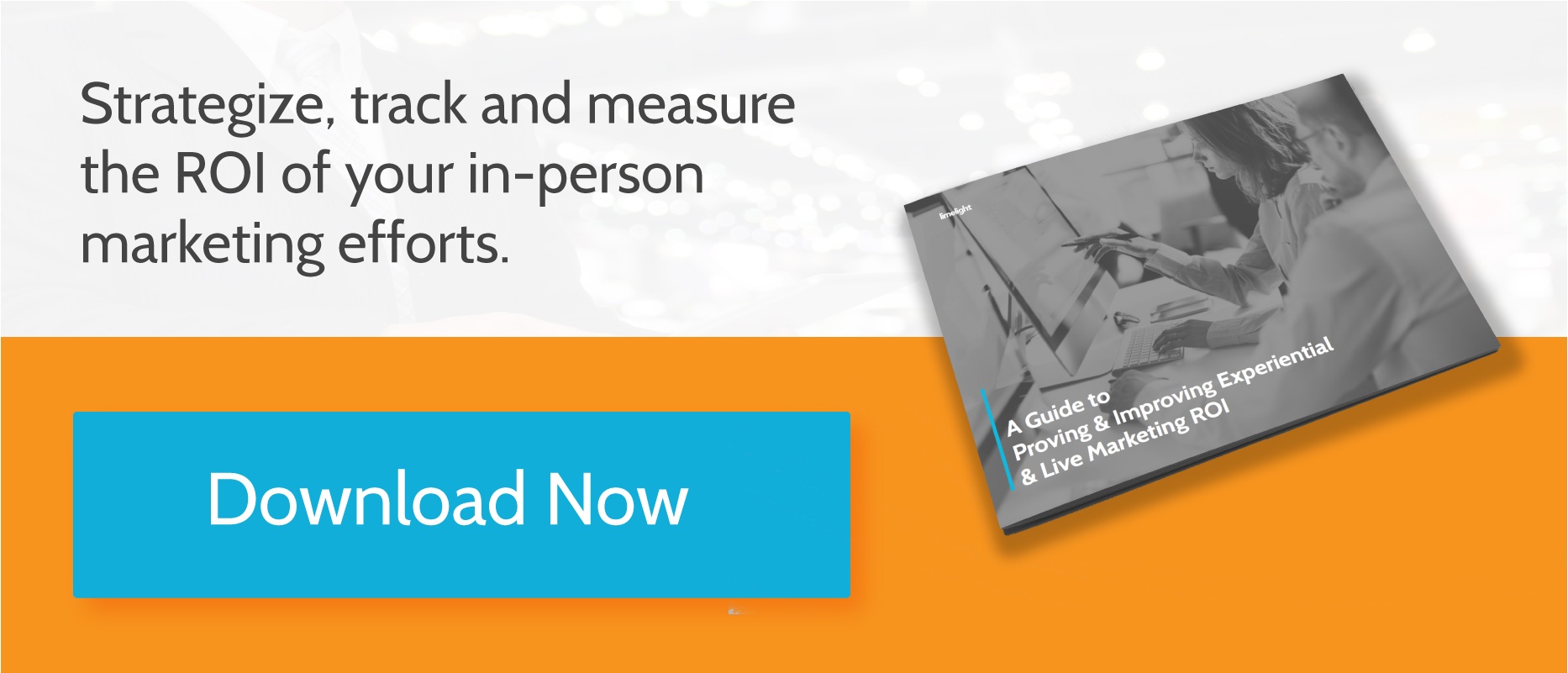Post-Event, Your Consumers Have Already Forgotten About You. Here’s How To Avoid It
.png?width=50&name=download%20(1).png) By
Julia Manoukian
·
3 minute read
By
Julia Manoukian
·
3 minute read
The promo team has gone home, the banners have come down, and the exhibition stands are packed away. It's all over; the event is done for another year. So now what? Marketers spend months -- years, even -- planning events, but they struggle with the bit that comes afterward. Call it the post-event blues: an emotional come-down that occurs when marketers can't engage with customers anymore.
It's easy to see why this happens. So much effort goes into lead generation and data capture at an event, and in the days and weeks after a trade show, activation or exhibition, they become a mere afterthought. There is a solution, though. It's time to go beyond offline activations and engage with customers throughout the entire marketing cycle. Here's how to reach consumers at exactly the right time.
Engage with customers after an event
Events are fantastic marketing vehicles. Businesses generate new leads, increase signups, promote services, network with other industry professionals, and move customers through the sales funnel. But an event is just the start of the marketing experience. After a trade show or live experience, marketers can continue to engage with customers and customize marketing material based on individual interests and behavior.
Sixty percent of consumers say that strong engagement improves the overall customer experience, according to The State of Engagement, a report commissioned by Marketo. Moreover, 51 percent of consumers say strong engagement makes them feel valued, heard and wanted. In short, increasing engagement with customers after they have left an event improves marketing efficiencies in the experiential space.
Increase engagement at the right time and place
Strike while the iron's hot. Thirty-one percent of consumers don't engage with brands and vendors more often because they are no longer interested in their products or services, according to The State of Engagement. In a nutshell, marketers who wait too long to follow up with prospects after a live event risk losing out on sales.
"If you organise recurring events, silence is your worst nightmare," says Pim Stuurman, co-founder of a social media visualization company. "You need to keep reminding people of your event. Keep the attendees' memories alive and their excitement up. You don't have to spam, but if the event you organise is annual, for example, throwing a surprise around mid-year is definitely a good idea."
Companies should choose the right engagement channels for their target audiences, too. Sixteen percent of business-to-customer customers and 15 percent of business-to-business customers don't engage with brands more often because they don't like the engagement channels the companies use, says The State of Engagement.
"An important fact that most marketers ignore is that customer intelligence [is] at the core of your marketing efforts. So the ideal way to begin is by gaining a better understanding of your customers," says digital transformation analyst Daniel Newman. "Note their key demographics like age, gender etc., identify their needs, their purchase patterns, spending habits, what influences their buying decisions, and so on. Collecting and analyzing this data is crucial in deciding which marketing channels are the best fits for you."
How to increase engagement after an event
The latest technology makes it easy to engage with event attendees throughout the year. An integrated software system, for example, lets marketers track prospects before, during and after an event, collecting valuable data from consumers in the process. Integrated systems execute multiple functions at the same time, saving marketers time and hassle. This software improves operations, boosts response times and enhances performance. As a result, marketers can plan future marketing campaigns and live events without relying on multiple applications.
Tech experts call integrated programs "systems of engagement" -- centralized, software that creates various points of data generation. Consequently, marketers use such software to generate personalized customer interactions. These programs reach consumers where and when they want to hear from a brand.
How marketers use tech to increase engagement
Marketers use integrated, automated software after an event to turn more prospects into bona fide customers. Take BuzzFeed, for example. The media company can send more than 20 email newsletters to customers based on their specific interests. This helps BuzzFeed increase engagement with its email subscribers and encourage them to visit the company's website. Only clever software can help fulfill this objective.
Surveys, promotions, coupons, email follow-ups -- companies can execute these marketing tactics after a trade show, exhibition or in-store experience with the latest integrated programs. This software can be highly personalized, so companies can target the most valuable customers. "That's why tracking and understanding your audience is so important-- so you can create smaller, more targeted campaigns instead of sending every sponsored email to your entire database," says Sarah Cobb, writing for HubSpot.
Engaging with customers after an event has finished should be a huge concern for marketers. During this important stage, they can follow up on leads, cross-sell and upsell products and services, and accumulate valuable data. The latest technology, including integrated software systems, makes this all possible.
These programs streamline post-event management and provide companies with a return on their investment. It's no wonder, then, that Radiant Insights projects that the global integrated systems market will be worth $24 billion by the year 2020.

